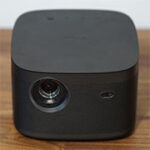The XGIMI Horizon Pro is the current flagship projector offered by the manufacturer and it uses the DLP technology (single chip) to deliver deeper blacks, a higher contrast, as well as a brighter overall video, making it suitable for rooms that are either bright or very dim.
The XGIMI Horizon Pro can be considered a main competitor to the BenQ X3000i, even though its price tag is usually substantially less and yes, both are 4K projectors, but neither are actually producing native 4K footage. Even so, the XGIMI is able to deliver some very convincing 4K images and, as my tests will show below, the projector does really well with both movies and even 4K gaming. Besides the 4K resolution (non-native), the XGIMI Horizon Pro offers a package of auto adjustment features for the footage which includes autofocus, auto keystone correction, intelligent screen alignment and intelligent obstacle alignment.
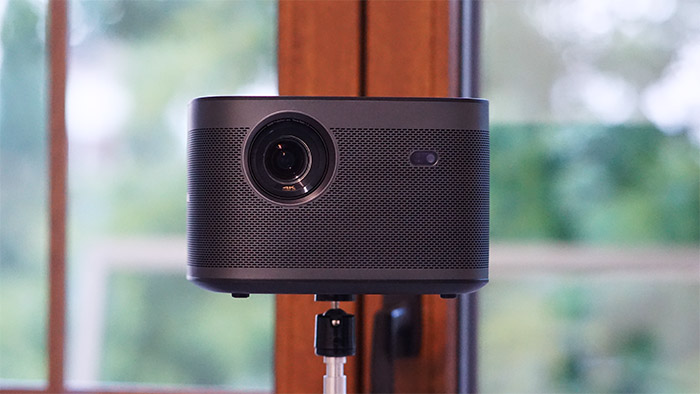
And it works incredibly well. Even if you put the projector at an angle, its distance from the wall has changed or regardless of any other positioning change, the XGIMI Horizon Pro will always successfully adjust the projected image. It’s all done automatically, so the user doesn’t need to change any other settings and yes, this does mean that the device is truly portable and one of the most user friendly 4K projector on the market.
This feature is also available on the non-Pro Horizon projector which makes that device just as compelling as the Pro. As for the software, the XGIMI Horizon Pro uses Android TV at its core and it does have integrated Google Assistant, as well as the most popular streaming services, except for Netflix, which needs a minor workaround. Furthermore, there is support for HDR10 + HLG, and the XGIMI went for Harman Kardon speaker for the sound, so overall, it does look like a very compelling package. Let’s put it to the test.
The Design and Build Quality
The XGIMI Horizon Pro is very compact, and I suppose it was designed to allow the user to move it around (that automatic angle and focus adjustment is a true godsend), but even if it measures 8.2 x 8.6 x 5.4 inches (20.8 x 21.8 x 13.6cm), it’s not really a lightweight device (it weighs 6.4 pounds). That’s the same as the XGIMI Horizon projector and yes, both devices do have the same design as well. The outer shell is metallic with a circular hole on the front for the lens and one the camera, and it curves nicely until it reaches the rear side where you can find the ports and connectors.
The lens is fully exposed, and it has a throw ratio of 1.2, while the camera next to it has the role of monitoring the image in real-time to do any necessary adjustments to keep it nice and focused. The rear side of the XGIMI Horizon Pro has some obvious ventilation areas for pushing out the air but know that the pattern on the metallic shell serves the same purpose to keep the internal temperature in check.
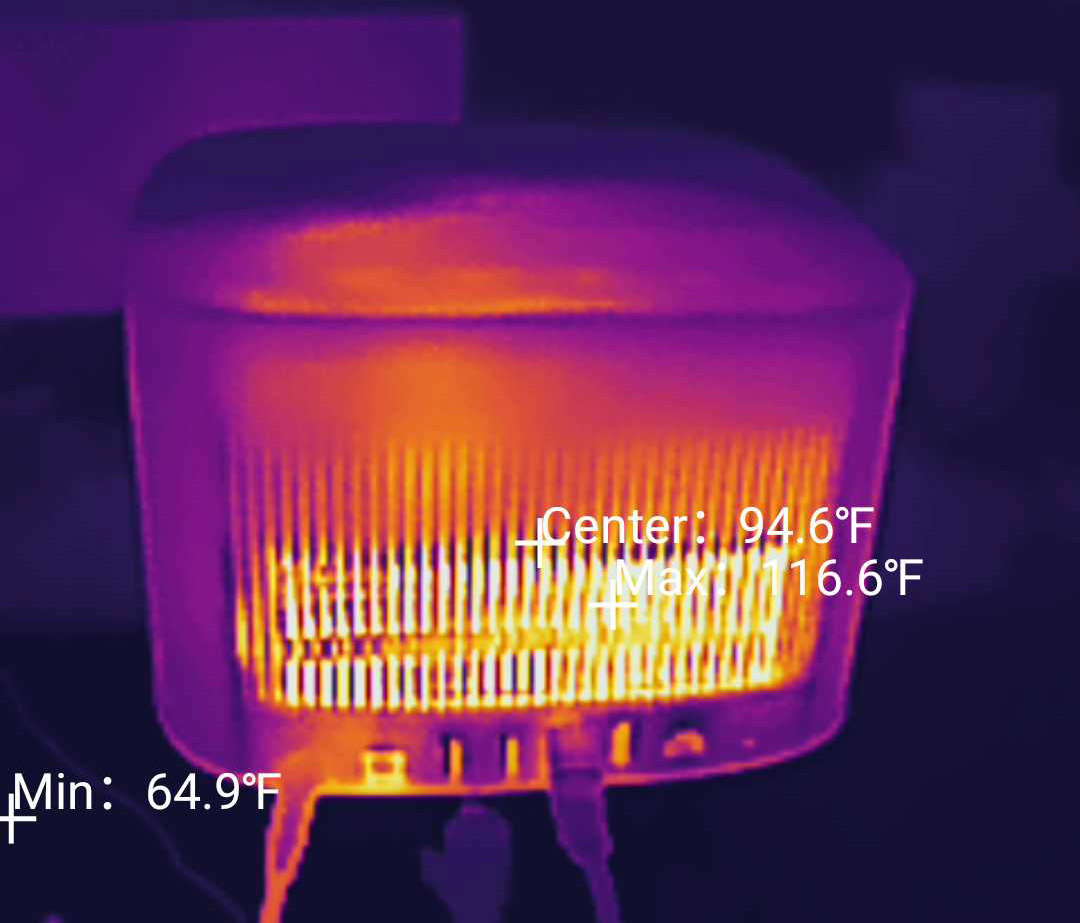
And yes, the projectors do tend to function at a slightly more elevated temperature, but the XGIMI Horizon Pro does make use of a very complicated cooling system that relies on copper pipes and a fan to keep the temperature low enough as to not warrant any throttling. I do need to mention that the fan is very quiet, so you don’t really have to worry about changing it with some Noctua’s – not that you’d be able to do so easily.
Returning to the rear side of the 4K projector, we can see that there is a Power port followed by an optical port, two USB-A 2.0 ports (for adding external storage – a drive with movies) and then there are two HDMI ports. The first is an HDMI 1 / ARC port for transfers up to 10.2Gbps and the second is an HDMI 2.0 port for data transfer at 18Gbps. Both ports are perfectly capable to deliver 4K videos, but the latter is better for a higher refresh rate. The XGIMI Horizon Pro only goes up to 60Hz, so yeah, it’s a nice feature to have but won’t really make a difference in our case.
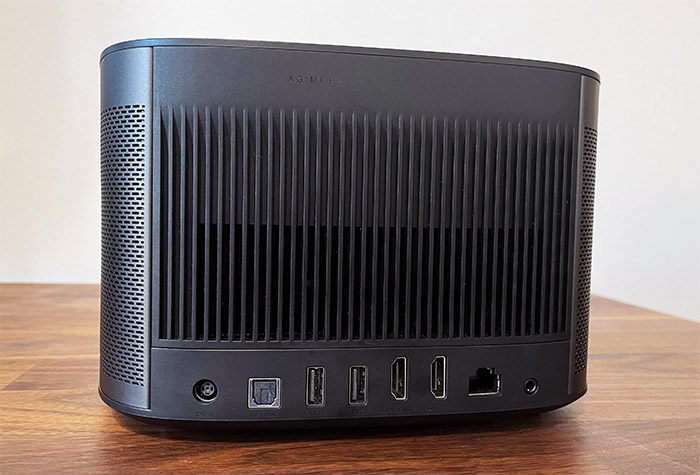
Next, we have the LAN port which I assumed it was Gigabit, but after connecting it to the Zyxel XS1930 switch, it revealed that it can only go up to 100Mbps. Is that enough for 4K movie and gaming streaming? Yes, yes it is. Neither will get close to 100Mbps. Lastly, we can see the 3.5mm jack for audio output. The top and the bottom of the projector are made of plastic which is fine since it doesn’t take away from the premium look and feel of the device.
At the bottom, there is a hole dedicated for mounting the XGIMI Horizon Pro on a tripod – there are four silicone feet as well to keep the device in place and it’s interesting that there are actually four mounting holes just like in the center where the feet are simply screwed in. At the top of the projector, there are four buttons, first is the Power button which has a red LED embedded into it and it has the role of powering on and off the device (press and hold the button).
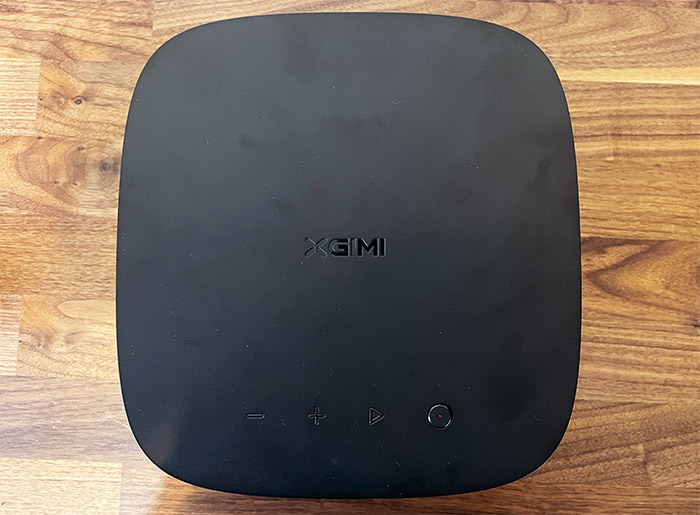
Then, there’s the Play/Pause button followed by Volume Up and Down. It’s a basic set of options, but do we need more? We got the remote for the proper set of controls. Before moving forward, if you look closer to the sides of the case, you will be able to see the two speakers (one on each side) and they’re both 8W Harman Kardon which should mean that they sound good. But we’ll put them to the test soon.
XGIMI Horizon Pro Teardown
I wasn’t very keen on opening up the XGIMI Horizon Pro mostly due to its price tag, but I mustered up the courage and detached the top part with a prying tool and doing so, I could see the controls board, as well as the antennas for the WiFi (dual band, so there’s support for 802.11ac).
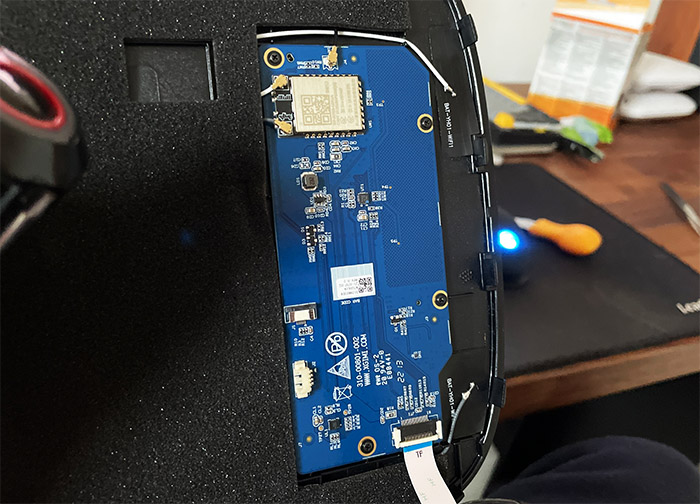
There was also the Bluetooth antenna since the XGIMI Horizon Pro does indeed use Bluetooth 5.0 / BLE. I could see the intricate cooling system which seems to be proprietary made for this projector. The fan is 12V and it’s really not easy to reach in case you want to replace it (it’s quiet, so there’s no actual need to do so). I didn’t really go farther than that, but the FCC ID website was offered a far more in-depth teardown.
This way, I could see the Mediatek MT668BUN 802.11a/b/g/n/ac 2×2 highly integrated single chip, the WF-M76B-USX1A WiFi and Bluetooth antennas, the 2x Texas Instruments DLPC3439 DLP digital display controller and the 09CCRCT G4 chip resistor.
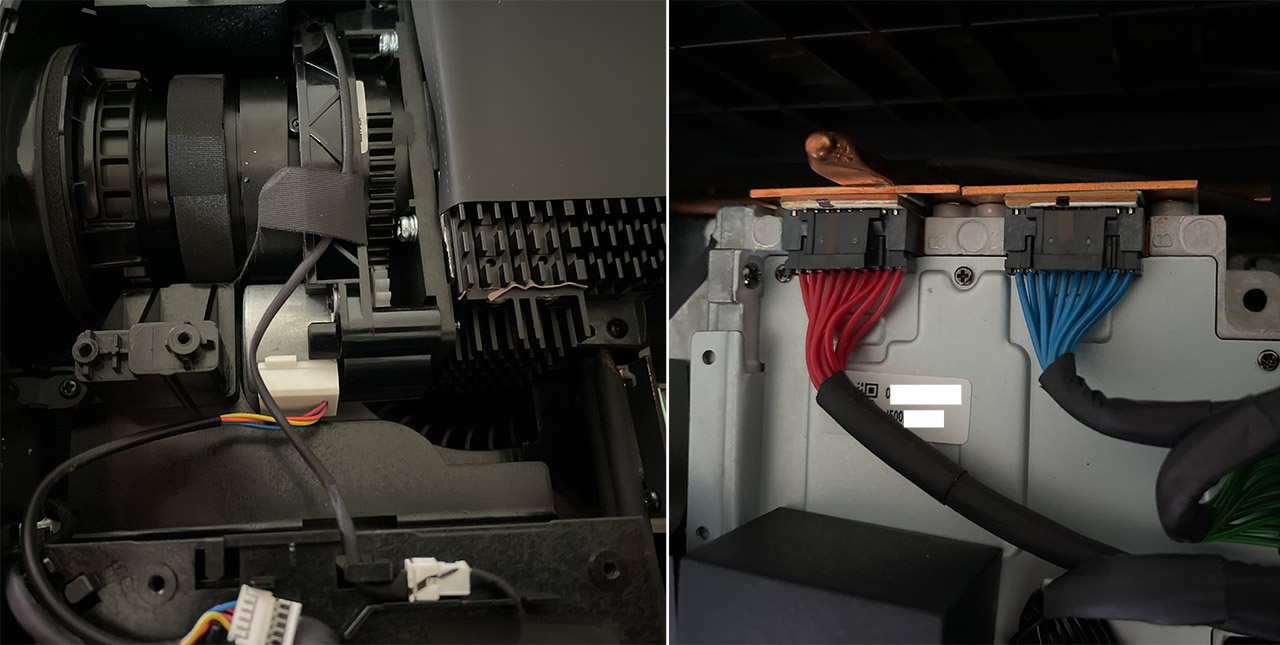
I also know that the XGIMI Horizon Pro features 2GB of RAM and 32GB of storage. One of the most important aspects is the DMD 0.47″ chipset which is the same as on the XGIMI Horizon and it does have a native resolution of 1920 x 1080 pixels. So, how is the XGIMI Horizon Pro able to achieve 4K?
How is the XGIMI Horizon Pro able to achieve 4K resolution?
As I mentioned before, the XGIMI Horizon Pro uses the DLP470TP 0.47″ DMD chip which has a native resolution of 1080p, so how can it go up to the required 8 million active pixels? It’s using the XPR technology to achieve that result. Well, sort of, because in truth, it doesn’t really go up to the minimum 8M pixels, but it does use some tricks as to make you see the data as if it was in 4K.
I am not going to go too much in the technicalities since the guys from ProjectorJunkies did a very exhaustive analysis on the matter, but the general idea is that the projector plays all the information within the 2M pixels (1080p limitation) and breaking it into 4 pieces which are then played with a slight delay. But enough for your eye to see the entire 4K information.
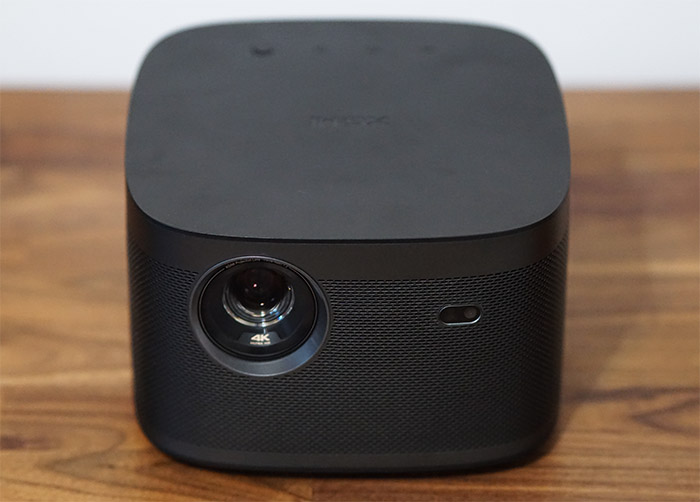
Can it be considered just a trick? Even if it’s not native 4K, the end result perceived by our brains is almost the same. So yes, if the projector is good, you can rely on it even if it’s non-native 4K. But there’s a but. And it’s specific for the XGIMI brand. The XGIMI Horizon is a very good projector, too good actually because people have complained that the Pro version doesn’t really offer a noticeable improvement. How come? Well, the reason is the projected area. If it’s too small, like underneath 100 inches and you’re about 10 feet away, then you most likely won’t see a difference.
Going farther than that and raising the projected area will show that the XGIMI Horizon Pro does offer a better performance. But there is another aspect that we need to discuss, it’s the rainbow effect. It’s well known that the DLP projectors can be susceptible to this effect, and I have seen it on the XGIMI Horizon Pro. But know two things. First, not all people will see this effect (about half the population will mentioned it) and secondly, Texas Instruments (the developer of the chip) has made significant advances, so the effect is less noticeable.
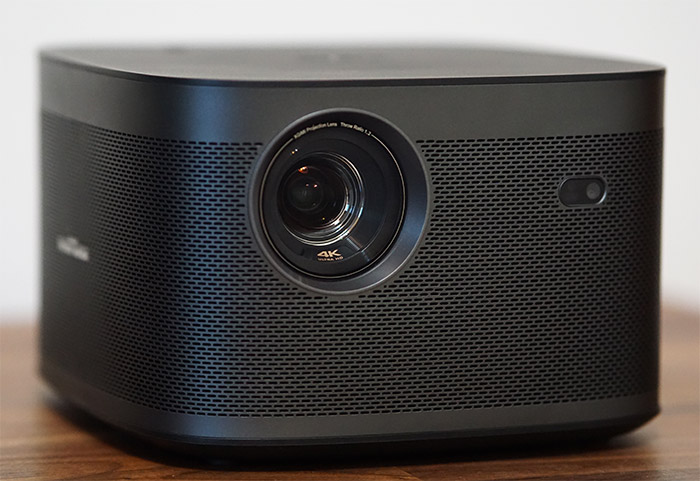
Also, I have seen that the developer may want to move past the 60Hz limitation which would pretty much negate this effect altogether.
The Remote Control
The remote control that comes with the XGIMI Horizon Pro is the nicest remote that I have ever handled so far. It’s not very lightweight, but the metallic body does give it a premium feel and look. And you don’t get a huge number of buttons, just the minimum required to quickly navigate the software interface. Before anything else, you do need to pair the remote to the projector and even before that you need to go and purchase a couple of batteries because there are none in the package or in the remote.
That being said the pairing procedure requires that you click and hold the Back and Home buttons at the same time until you hear a sound from the XGIMI Horizon Pro’s speakers. You get the volume buttons, a Settings buttons and in the middle, there is even a D-PAD suitable for certain applications.
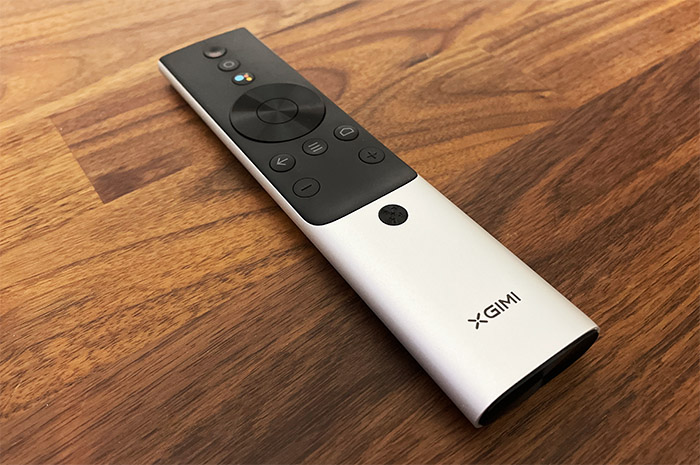
There is also a shortcut to the Google Assistant and there is a microphone built into the remote to make things easier. Also, embedded within the metallic case, there is the Focus button. While I was navigating the interface, I never felt that I was missing a keyboard and a mouse even if I had to write something in search bars. I know that the Android TV has come a long way and it does feel that intuitive on other devices as well, but the remote control seems perfectly tailored for the XGIMI projector interface. That’s unless you need to use a browser – you need a mouse and a keyboard at that point.
The Software Experience
XGIMI Horizon Pro 4K is essentially an Android TV, so you do need a Google account to access its features (there is some data collection since we’re talking about Google..). And, as I mentioned in the previous section, there is a very good symbiosis between the remote control and the interface, so you can quickly move through menus and options.
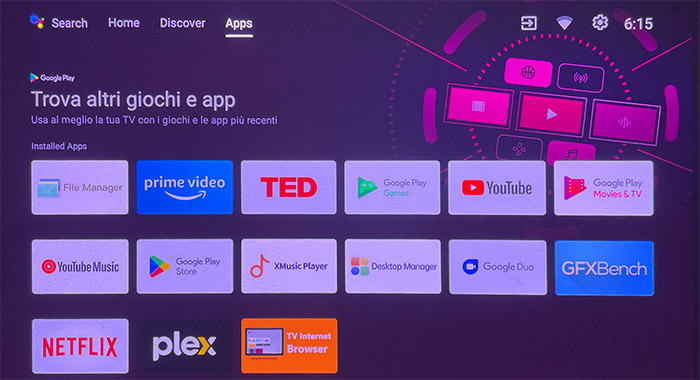
The 2GB of RAM seem to be more than enough for a smooth navigation with zero stuttering so far which I suppose was expected considering the price tag of the projector. You do get some of the most popular streaming apps already installed which includes Prime Video and the Google properties (YouTube, Music) but what is missing is Netflix which was a very weird app to omit. And it’s not even in the app store either. It’s curious considering that there is a Chromecast built into the XGIMI Horizon Pro, but the manufacturer has found a workaround, although the resolution will suffer.
I have mentioned the Chromecast integration, so you can cast videos or games directly towards the projector, and Google Assistant will let you give vocal commands from the remote control. Let’s not forget that the XGIMI Horizon Pro also support 3D videos. How does that work? Well, you need to click on the Settings button (on the remote) and select the 3D Videos Setup. Then, you get to choose between Side-by-side, Top and bottom, as well as 3D to 2D – you will need to use special glasses to see the footage properly.
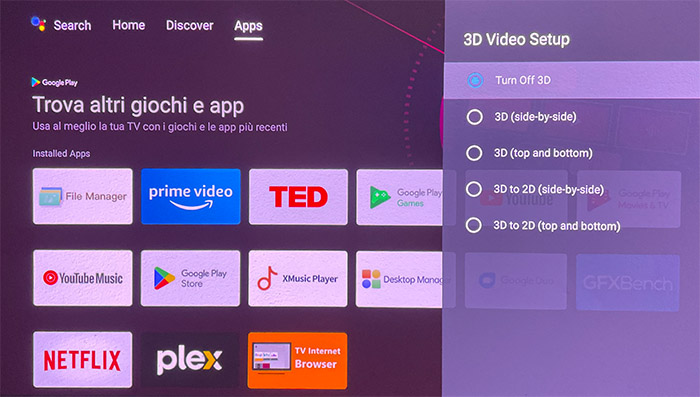
Automatic Adjustments
XGIMI calls this suite of automatic adjustment features the Intelligent Screen Adaption Technology and it is indeed one of the best features that I have seen on any projector, even the more expensive ones. If you have ever gotten a cheaper projector, you know that you have to manually adjust the keystone alignment, as well as the focus. The XGIMI Horizon Pro 4K projector will do all those adjustments for you. There are two main settings and the first is called Keystone Correction.
XGIMI has added the Auto Keystone Correction as the first option, so they’re definitely spoon feeding us, but there are some settings involved here. You can find them under Keystone Settings: you can enable this function on Startup and when the projector has been put into a new location. Then, there’s the Obstacle Avoidance and the Auto Screen Alignment. The former uses the camera to detect that the surface where the image is projected is irregular (due to a piece of furniture, a painting or even a power outlet), so it moves the image around that obstacle.
The latter detects that you have positioned the XGIMI Horizon Pro at an angle and it tries to adjust the image as to be straight in the middle. Most of the times it works perfectly, but there have been some instances where I adjusted the angle a bit more manually. I know that a lot of people need to do this calibration only once and afterwards the projector essentially becomes a piece of furniture, but for people that need to move the device a lot, this is a godsend. The second setting is the Autofocus which is less complicated and, using the same camera, it will adjust the focus accordingly.
The Image Quality
Let’s first talk about uniformity. To assess whether the XGIMI Horizon Pro is able to produce a perfectly uniform image, I used five 4K pictures, each displaying a certain color. As you can see, the black was fairly uniform, with the exception of the top left corner.
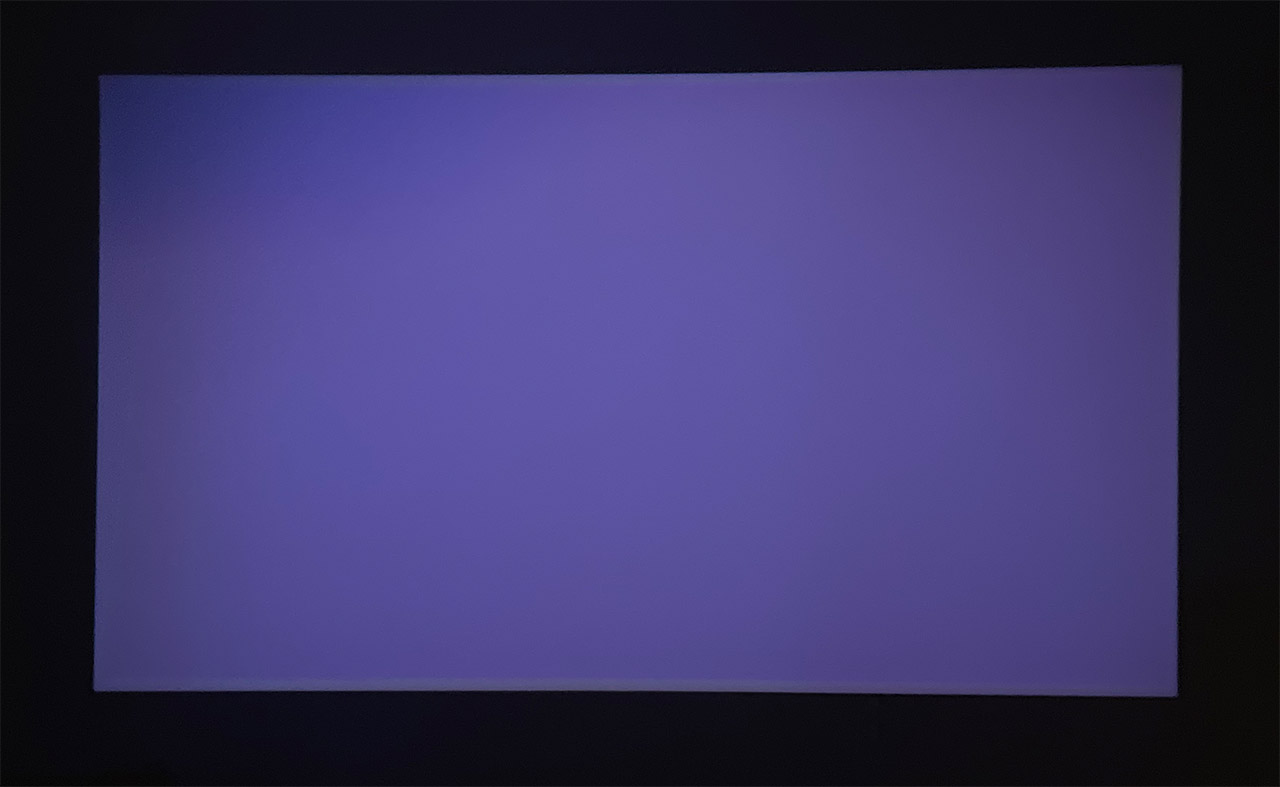
There was a slight shade which remained regardless of where I positioned the projector (I cleaned the lens, so it’s not a smudge). At the same time, the blue was far better and it’s almost perfectly uniform – at least with the naked eye because the photo still shows a very slight darkening in the top left corner.

The green seemed perfectly uniform and so was the red, and the white was another pleasant surprise because it was very well uniform all through to the corners. I have checked what other people were experiencing and it does seem that the uniformity issue during dark scenes is far more pronounced with my unit.

Moving on, I played some videos and movies to get an idea about what the projector is capable of achieving. Since there are few 4K movies out there, I had to rely on YouTube, and I used a 12K HDR video which went up to 4K (right..). The footage looked absolutely stunning, the colors were vivid and there was an incredible amount of detail. I even went closer to the wall so that you get an idea about just how detailed everything was – I watched 10 ads for a few minutes of this video, so YouTube lost its mind.
XGIMI Horizon Pro
-Pros
- Very good build quality
- Automatic focusing and keystone adjustment
- 4K resolution (non-native)
- The remote control is perfectly integrated with the interface
- Good color accuracy - can be calibrated
Cons
- There is a slight shade on the top left corner when the image is dark
- I did notice the rainbow effect (normal for DLP projectors)

Mark is a graduate in Computer Science, having gathered valuable experience over the years working in IT as a programmer. Mark is also the main tech writer for MBReviews.com, covering not only his passion, the networking devices, but also other cool electronic gadgets that you may find useful for your every day life.

